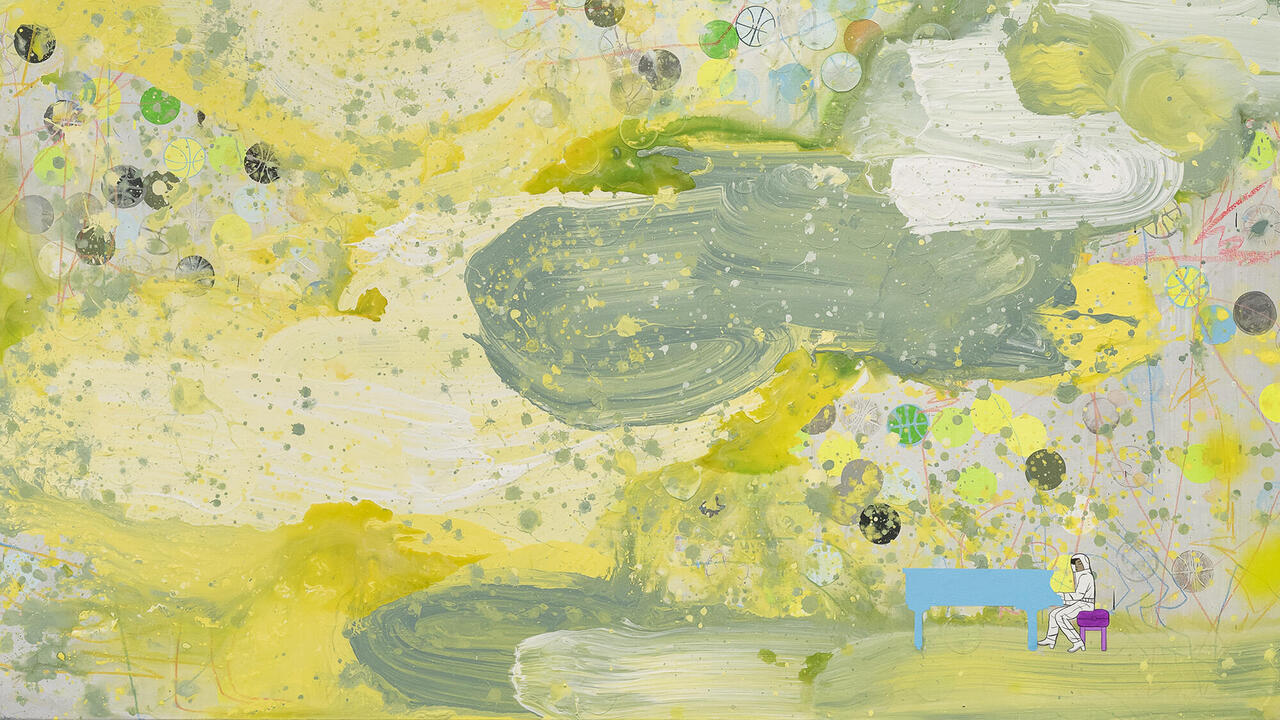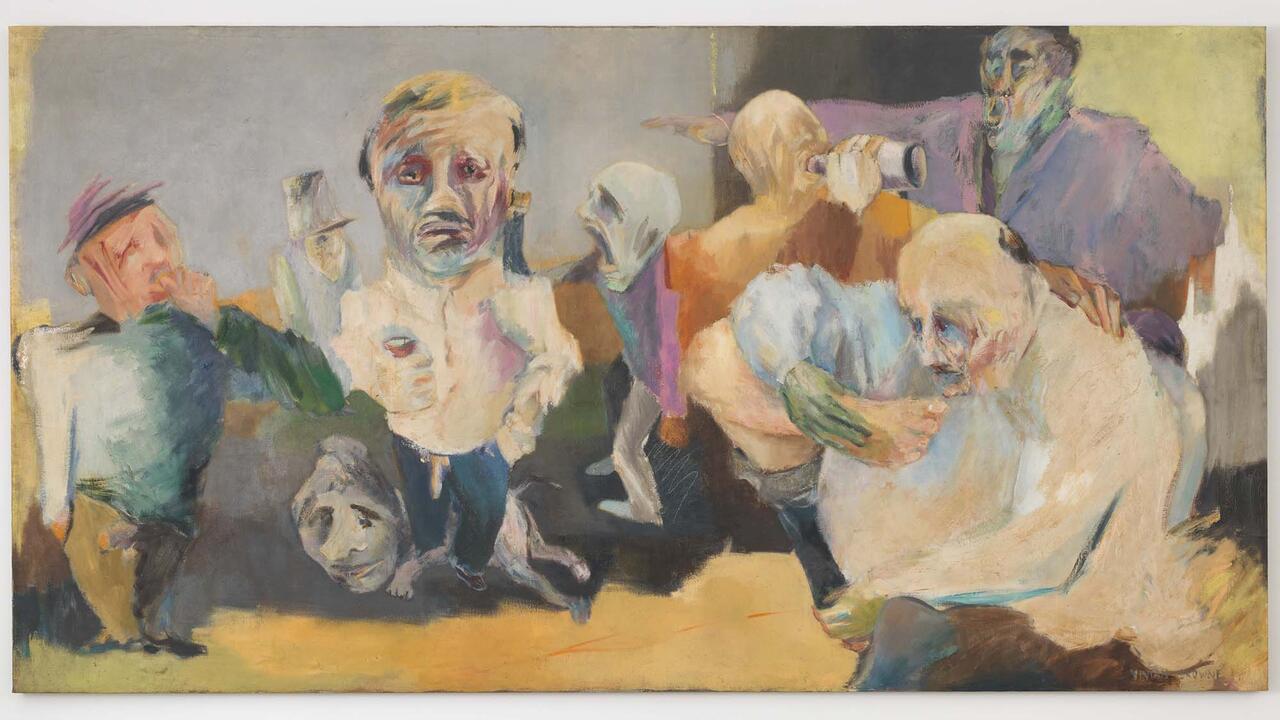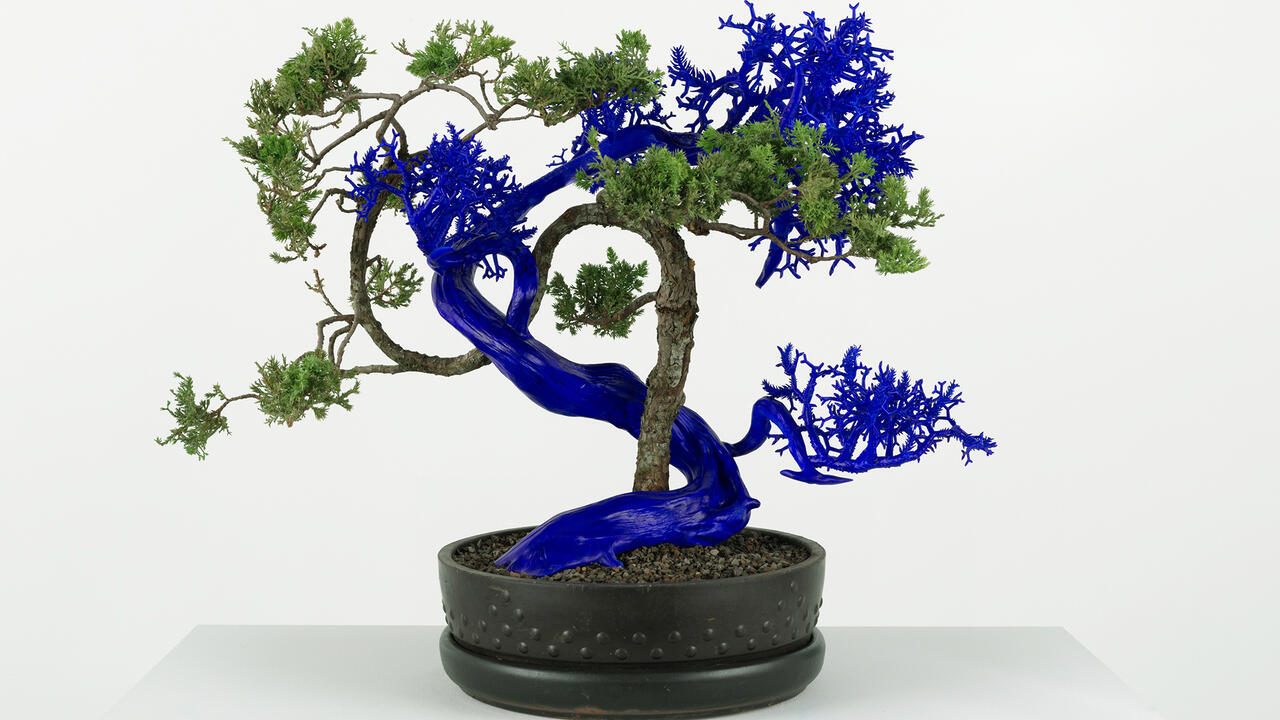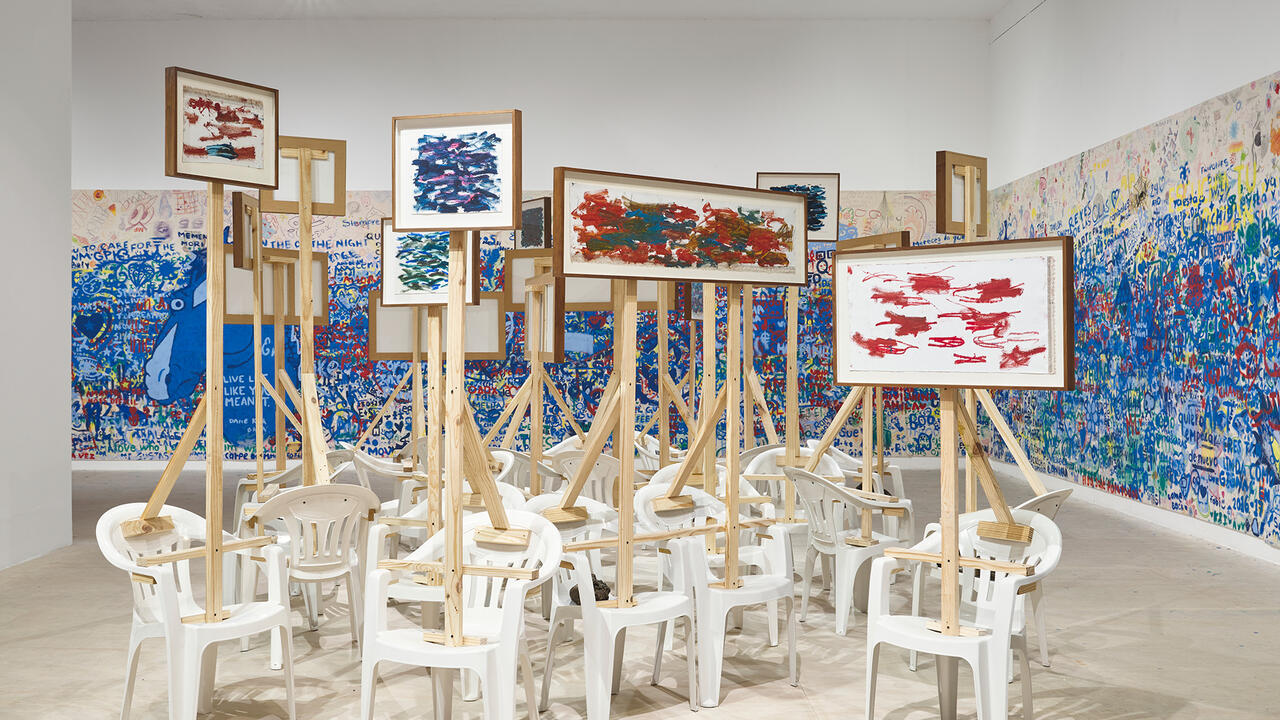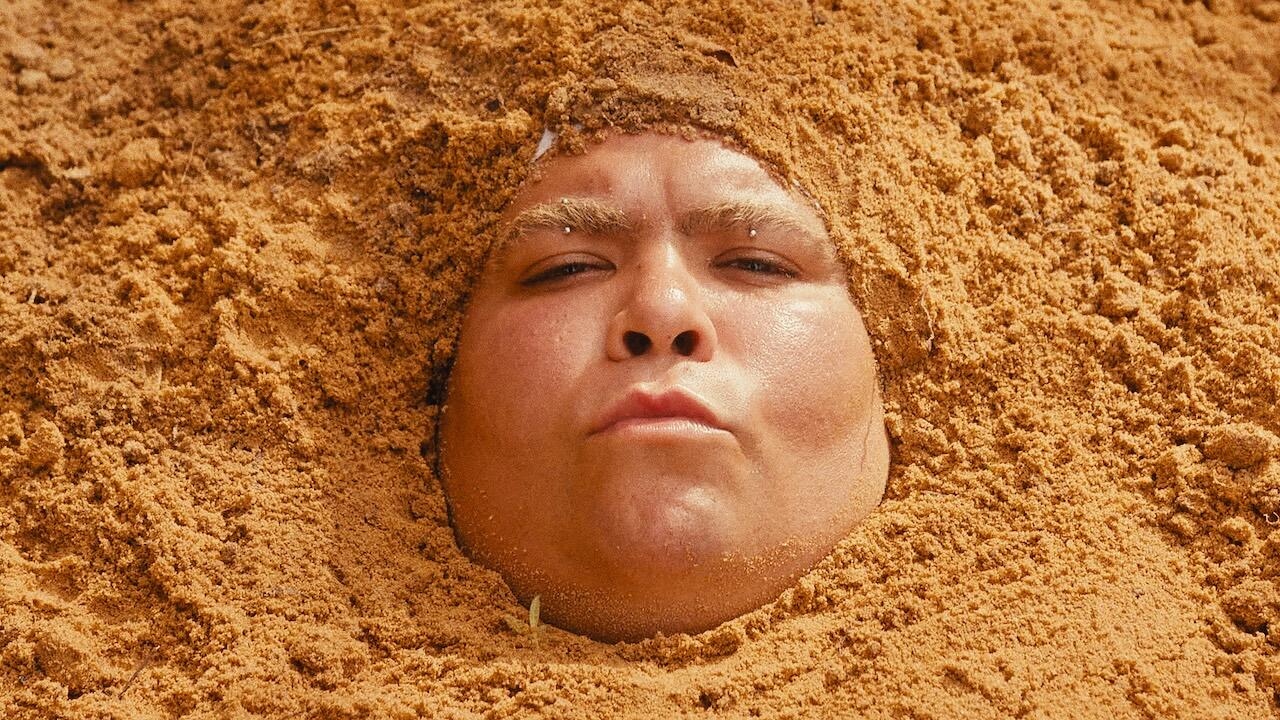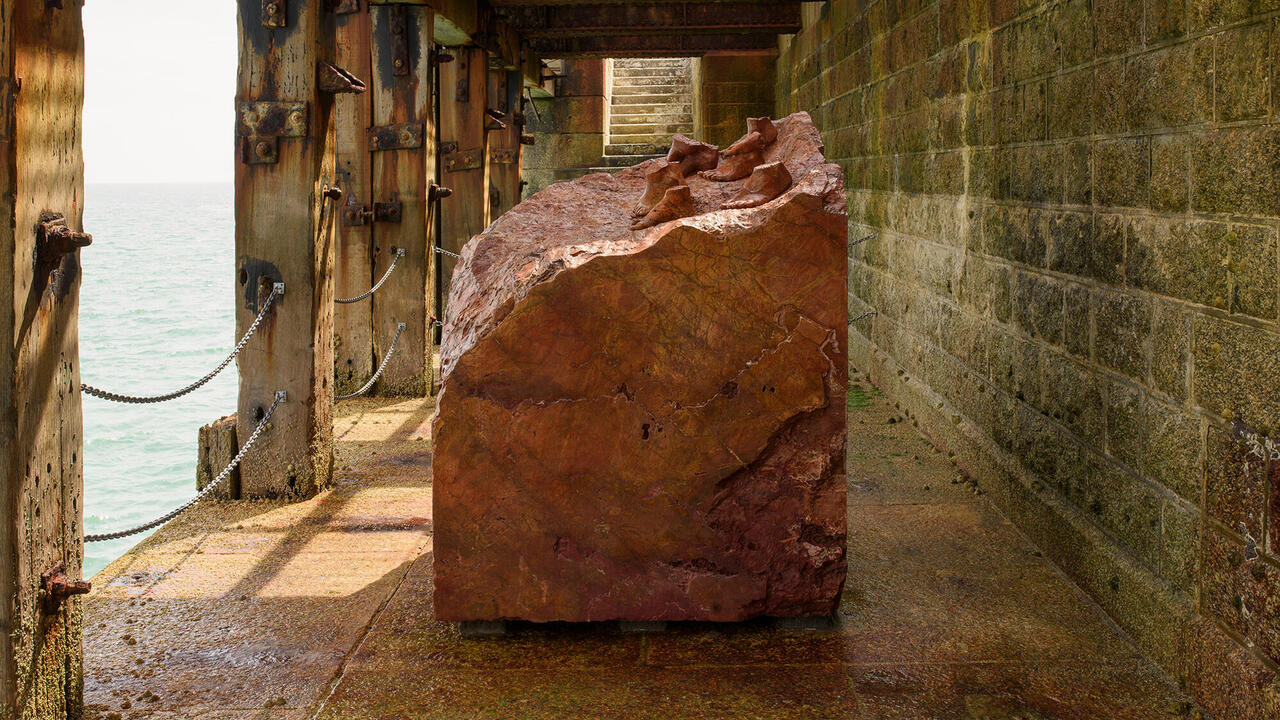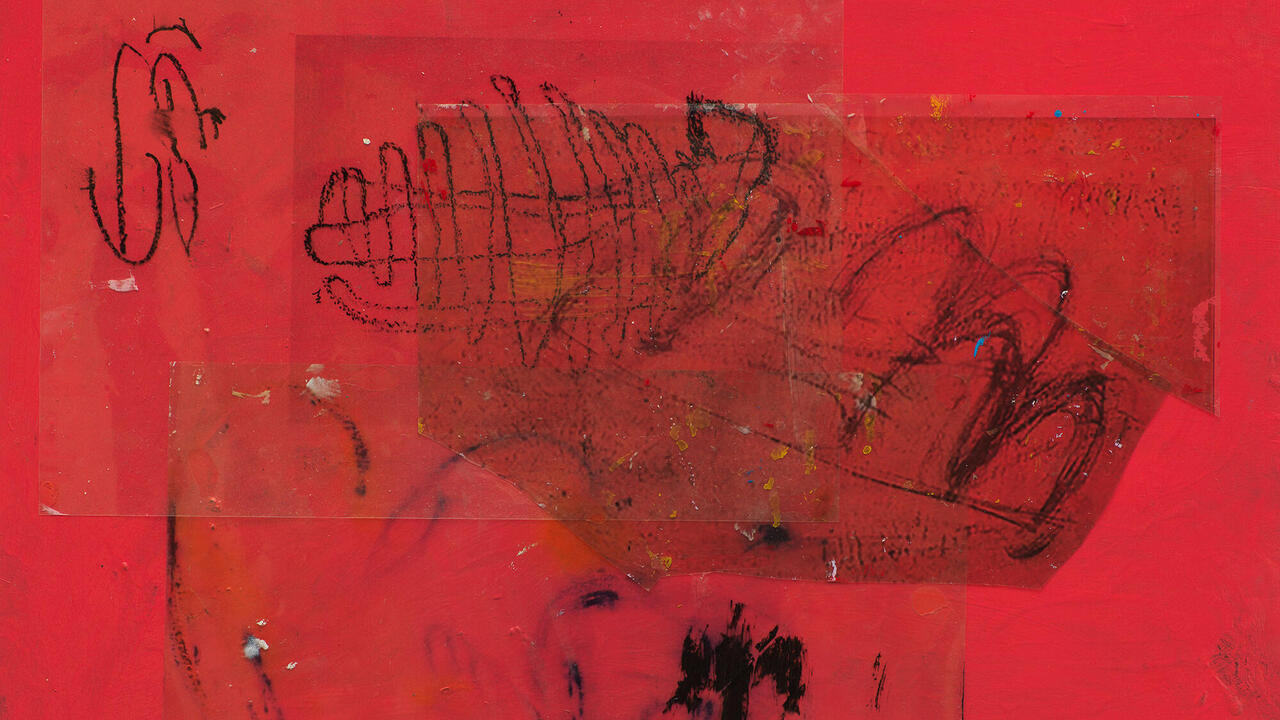Allison Katz Treats the Museum Like Home
At Aspen Art Museum, the artist-curator arranged private collection works to reflect the layout of an ancient Roman townhouse
At Aspen Art Museum, the artist-curator arranged private collection works to reflect the layout of an ancient Roman townhouse

As with sonar navigation, curating is fundamentally a test of limits – sending a signal out and seeing what resonates. For Canadian artist Allison Katz, whose paintings pull from a vast collection of iconographies, this process of selection and combination comes easily – giving her recent turn to curating the weight of inevitability. Troubling the distinction between artistic work and curatorial project, ‘In the House of the Trembling Eye’ at Aspen Art Museum features new and recent pieces by Katz alongside works by other artists, predominantly sourced from private collections in and around Aspen, and adopts the framework of an ancient Roman townhouse, or domus. (Katz has long been fascinated by Pompeii and participated in the archaeological site's fellowship program in 2022.)

The show is accompanied by three bound handbooks that double as exhibition checklists and explications of each work’s relevance to its particular household zone. To wit, the text accompanying works zoned within the interior garden explains that the word is derived from the old Saxon gardyn, which maps onto both ‘yard’ and ‘guard’. If, like me, you appreciate paintings but are genuinely excited by etymology, you will have fun here – and be alternately heartened and confounded by what people have chosen to display in their homes. The artist described encountering works (some decidedly the sort one imagines would be tricky to live with) everywhere: tucked into foyers, bathrooms and guest bedrooms.
In addition to contemporary artworks, ‘In the House’ incorporates ancient painted fresco fragments loaned to the Aspen Art Museum by the Archaeological Park of Pompeii. On entry to the exhibition’s first gallery, ‘Street, Atrium, and Tablinum’, viewers are confronted with a massive figural sculpture by the British artist Bharti Kher presiding over the villa’s tablinum – in ancient times, a space that functioned as both office and stage, where the household’s paterfamilias held court. Father (2016) is a life-sized cast of the artist’s father in wax and plaster of Paris. Materially humble, the work and its placement underscore Katz’s interest in subverting traditional seats of power.

Meanwhile, an enclosed lower gallery – the triclinium – suggests a less exposed, more intimate space. Ancient Romans designed the triclinium to encourage people to commune in groups of three; Katz’s triadic curatorial arrangement, with three artworks to each wall as if they were stand-ins for people in conversation, makes the suggestion explicit. In one grouping, Katz’s Crosstalk (2024), a painting of two mouths engaged in conversation, shares space with Isa Genzken’s concrete sculpture Weltempfänger (World Receiver, 2015) and with a Pompeiian fresco of a framed scene with three figures – frozen as if they were characters in a paused sitcom. In another grouping, flanked by a Pompeiian panel and Alice Neel’s 1983 portrait Olivia and Joe is Mike Kelley’s decoupaged furniture set Nature and Culture (1987). The work’s lower chest of drawers is plastered with eyes and lips, while the wall-mounted panel depicts scenes of military conflict. Throughout the room, gossip and intimacy share space with topics of broader political import.

The curatorial narrative culminates with fire. The show’s final section is titled ‘Culina, Eruption and Gradiva’, with gradiva loosely translating as a woman who advances or excavates. The works displayed here harbour sentiments of desire, built-up tensions, eruptions and their aftermath. To emphasize this messiness, Katz placed as a coda Nancy Lupo’s Untitled (2024), a well-loved, 32-gallon Rubbermaid trash can whose holes Lupo patched and bedazzled with pearls.
For the nosy, the show’s greatest reveal is in the things the exorbitantly wealthy find worthy of purchasing and squirreling away in ski lodges. But the resonances Katz creates, by placing these disparate objects in conversation, cumulatively results in something far more tender.
‘In the House of the Trembling Eye’ is on view at Aspen Art Museum until 29 September
Main image: ‘In the House of the Trembling Eye’, curated by Allison Katz, exhibition view, 2024. Courtesy: Aspen Art Museum; photograph: Daniel Perez











